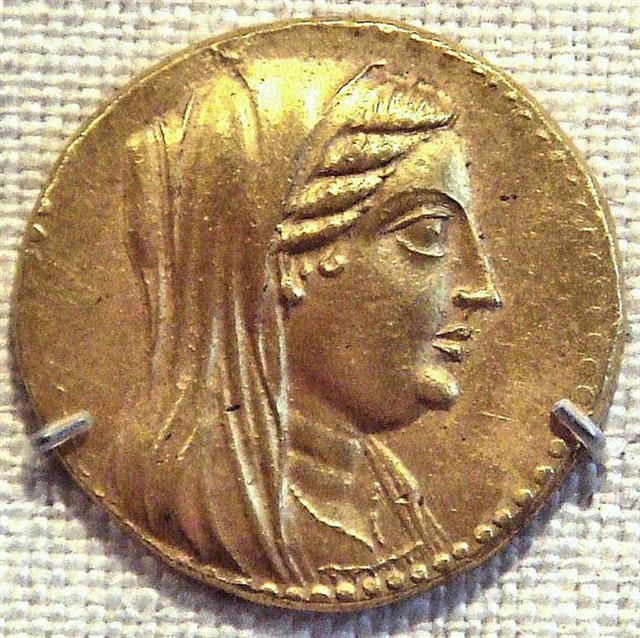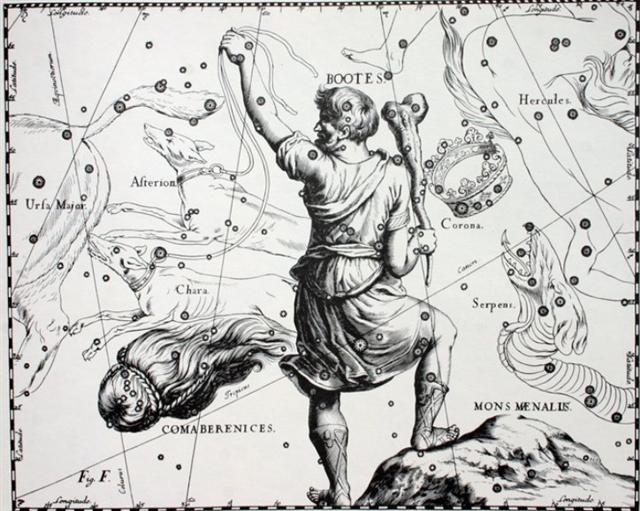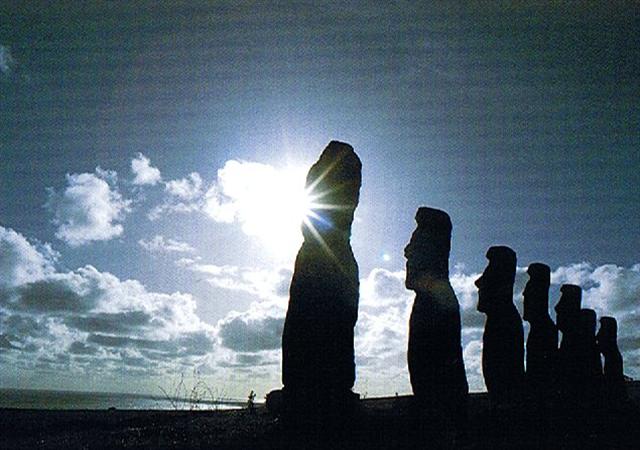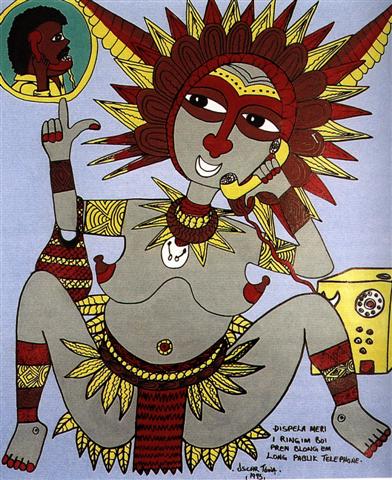|
ADDENDA
222.6 When guessing what the structure of the text on the D tablet might be we should maybe rather look at the C text than at the G text for comparisons. Because the G and H tablets were presumably late in time and maybe designed in order to first of all please the Chilean officers onboard the corvette O'Higgins. Whereas the C tablet was there already in premissionary times. The C text was designed to begin not at spring equinox as defined north of the equator but in spring south of the equator. South of the equator the season were opposite to those north of the equator.
The southern spring came when Raven (the Corvus constellation) ideally should be at the right ascension line of the Full Moon.
So we ought to consider the possibility that side a on the D tablet might be connected with spring south of the equator and its side b with autumn. In order to cover the distance from the southern spring equinox (= northern autumn equinox) to the southern autumn equionx (= northern spring equinox) the text should cover around *366 - *188.0 (γ Coma Berenicis) = 178 days.
We have only 126 glyphs to play with, and maybe we should rather look at Cb1-6 instead of at Ca1-6.
North of the equator the very bright star Arcturus was at the anus of Bootes and it was connected with autumn equinox
and thus it logically ought to be connected with spring equinox down on Easter Island. The beginning of the year was in the north connected with ceremonies for 'Opening of the Mouth' (to let in the lifegiving oxygen in the air) and consequently the beginning south of the equator should be connected with the opposite orifice:
Alternatively they could of course keep to the ancient traditions by looking towards the horizon in the west (†) instead of the horizon in the east (*):
... On the late afternoon of the June solstice, towards sunset, we reached Ahu Akivi near the centre of the western side of Easter Island. This is an inland site, 3 kilometers from the coast. Like Ahu Nau Nau at Anakena, it has seven Moai, but in this case none of them have topknots and, uniquely, all face west towards the sea - which is clearly visible from the high point on which they stand ... Are the Australians celebrating Christmas in June? Therefore the eye-catching disintegration of the parts visualized in Cb1-6
maybe should be compared to the structural disintegration of the glyph line at the end of side a on the D tablet.
Or should we rather compare Da8-3 with Ca1-6 because in both cases there were evidently efforts to keep the integrity intact: ... To follow up the long and laborious way leading from Rigvedic Mitrāvaruna (dual) to the latest days of the Roman Empire where we still find a gloss saying 'mithra funis, quo navis media vincitur' - 'mithra is the rope, by which the middle of the ship is bound', would overstep the frame of this essay by far. Robert Eisler relying upon his vast material, connected this fetter or 'rope', mithra, right away with the 'ship's belt' from the tenth book of Plato's Republic. Of the inseparable dual Mitrāvaruna, Varuna is still of greater relevance, particularly because it is he who 'surveyed the first creation' (RV 8.41.10), he who hid the Ocean - Ovid had it that the sources of the Nile were hidden - and he who is himself called 'the hidden Ocean' (RV 8.41.8). Varuna states about himself: 'I fastened the sky to the seat of the Rita' (RV 4.42.2). And at that 'seat of Rita' we find Svarnara, said to be 'the name of the celestial spring ... which Soma selected as his dwelling'.¹ ¹ ... Soma is addressed as 'lord of the poles', and to Agni is given the epithet svarnaram thrice ... But we did hear about 'Agni, like the felly the spokes, so you surround all the gods', and Soma and Agni supplement each other ... This is no other 'thing' than Hvarna (Babylonian melammu) which the 'bad uncle' Afrasiyab attempted to steal by diving to the bottom ot Lake Vurukasha, although Hvarna belonged to Kai Khusrau ... Thus in whichever dialect the phenomenon is spelled out, the fallen ruler of the Golden Age is held to dwell nearest to the celestial South Pole, particularly in Canopus which marks the steering oar of Argo, Canopus at the 'confluence of the rivers'. This is true whether Varuna fastened the sky to the seat of the Rita (and his own seat), whether Enki-Ea-Enmesharra, dwelling in Eridu, held all the norms and measures (Rita, Sumerian me: Akkadian: parsu) - Thorkild Jacobsen called him very appropriately the 'Lord modus operandi' - or whether Kronos-Saturn kept giving 'all the measures of the whole creation' to Zeus while he himself slept in Ogygia-the-primeval ... Thus side b will surely begin with glyph (day) 126 + 1 = 127:
... Matua [A Taana] said to Hotu [A Matua], 'Take along the Hanau Eepe and let them work the land!' Hotu called out to Heke: 'Go and bring the 500 prisoners on board the canoe!' He took all of them along, led them on board the canoe, and left them there. For six days (po ono), mats (moenga) were taken on board the canoe (i.e., the loading of the canoe took six days) ... [E:73-74] 126 (Da8-6) + 16 = 142 (Db2-1):
There was a site of birth (hanau) both at Db1-1 and at Db2-1.
|
|||||||||||||||||||||||||||||||||||||||||||||||||||||||||||||||||||||||||||||||||||||||||||||||||||||||||||||||||||||||||||||||||||||||||||||||||||||||||||||||||||||||||||||||||||||||||||||||||||||||||||||||||||||||||||||||


















